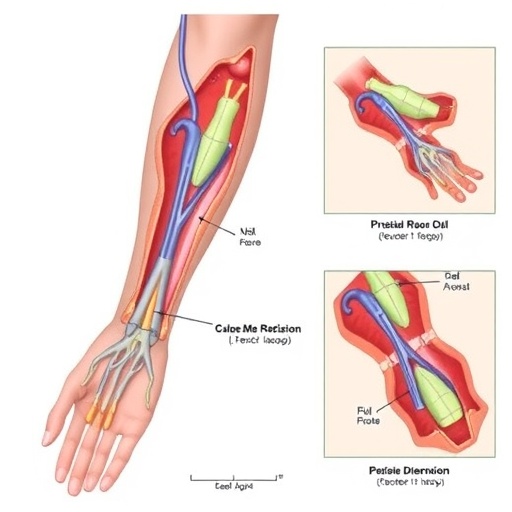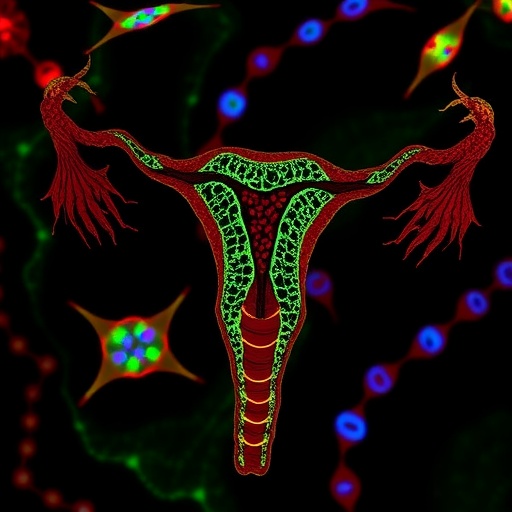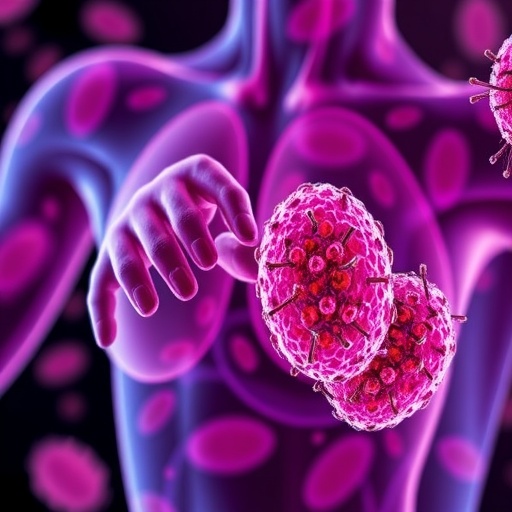In an era where advances in medical technology are rapidly transforming healthcare practices, a notable development has emerged that bridges military and civilian medicine: ex-vivo limb perfusion. This groundbreaking technique has garnered attention for its potential applications following traumatic limb amputation and its role in enhancing peripheral nerve regeneration. The research, spearheaded by Haastert-Talini and collaborators, delves into this promising methodology, exploring the profound implications it holds for both military personnel and civilians alike.
Ex-vivo limb perfusion refers to the process of perfusing a limb outside of the body to restore or enhance its physiological functions. Traditionally, the concept drew inspiration from ex-vivo organ perfusion, a process that prolongs the viability of organs outside the body for transplant purposes. This innovative approach not only offers a new lease on life for amputees but also sparks hope for those suffering from conditions affecting their limbs. What’s more, it seeks to address a broader spectrum of challenges that arise from traumatic injuries, particularly those encountered on the battlefield.
The relevance of ex-vivo limb perfusion is especially pronounced in military contexts, where injuries from gunfire, explosive devices, and other acute trauma can lead to devastating consequences. Traditional methods often leave little room for salvaging limbs or facilitating regeneration. The research presents a paradigm shift in how we approach orthopedic trauma, emphasizing the necessity of preserving affected limbs whenever possible. It proposes that through advanced medical techniques, healthcare providers may now better manage severe clamping of the limb’s blood supply and the subsequent tissue damage that often follows.
The study highlights a range of potential benefits associated with the technique. By providing a controlled environment for limbs post-injury or amputation, ex-vivo limb perfusion allows for the restoration of blood flow, nutrient delivery, and oxygenation to injured tissues. This systematic approach is pivotal for maintaining cellular integrity and function in tissues that would otherwise succumb to necrosis due to ischemia. As a result, the application of this technique has the potential to significantly improve outcomes in patients by creating optimal conditions for healing.
Additionally, researchers emphasize the role of ex-vivo limb perfusion in peripheral nerve regeneration. Nerve injuries can often lead to significant functional deficits, and current therapeutic strategies have limitations in their capacity to regenerate nerve tissues. This research opens possibilities for targeted interventions that could enhance nerve recovery, ultimately restoring motor and sensory function. It lays the groundwork for future innovations that could fundamentally alter recovery trajectories for injured patients.
One of the key aspects of this investigation involves the use of biocompatible perfusion solutions designed to mimic the physiological environment necessary for cell survival and function. These solutions have been crafted with careful consideration of the specific metabolic needs of various tissues, ensuring that oxygen and nutrient supply is optimized during the perfusion process. Advanced technologies are currently being harnessed to monitor the physiological parameters of the limb during perfusion, with real-time data collection allowing for tailor-made interventions that respond dynamically to the needs of the tissue.
Moreover, the research focuses on optimizing the perfusion parameters to ensure effective outcomes. There’s an ongoing examination of perfusion pressure, flow rates, and duration—all of which play critical roles in the success of the procedure. Scientifically, the goal is to establish an evidence-based framework that can guide clinicians in applying this technique effectively to maximize benefits for the patient while minimizing risks associated with the procedure.
The collaborative nature of this research, involving multidisciplinary teams, underscores the complexity of developing effective treatment strategies in modern medicine. Expertise in vascular biology, surgery, and tissue engineering converge, enabling comprehensive solutions to challenges faced by individuals with traumatic injuries. The multifaceted approach aims not only to advance medical techniques but also to provide detailed insights into the cellular responses involved in ex-vivo limb perfusion.
During the investigation, a focus has also been placed on the psychological impact of limb preservation on patients, particularly in military contexts. Returning to functional mobility is paramount for the overall well-being of individuals affected by trauma. The prospect of maintaining limb function through innovative biomedical approaches adds a layer of hope and empowerment for patients and their families, fostering resilience and an improved quality of life.
In summary, ex-vivo limb perfusion represents a frontier in both military and civilian medicine with the potential to revolutionize approaches to traumatic limb injuries. As the research continues to evolve, so does the anticipation regarding its applications and the pathways it may open for future innovations. Integrative strategies that combine biological engineering with clinical practices may foster new standards in treatment protocols for those facing debilitating injuries, ultimately heralding a new dawn in restorative medicine.
The collaboration among Haastert-Talini, Katsirntaki, Kankowski, and their team reflects an urgent need to advance therapeutic solutions that enhance healing processes, improve survivability in the face of trauma, and drive dialogue around patient care strategies. The outcomes of these pioneering efforts will doubtlessly shape the trajectory of trauma surgery, limb rehabilitation, and patient recovery for years to come.
As we stand at this juncture of healthcare innovation, the broader implications of this research are immense. It forces us to reconsider what is possible when technology and human compassion work hand in hand to address the profound challenges faced by those whose lives have been altered by traumatic events. The future of medicine looks promising, where tailored interventions driven by research can facilitate not just survival, but a return to a meaningful life for those who have endured the unimaginable.
The intricate journey of ex-vivo limb perfusion marches forward, driven by the collective mission to redefine healing and rehabilitation, transforming the landscape of trauma care as we know it.
Subject of Research: Ex-vivo limb perfusion in military and civilian medicine.
Article Title: Ex-vivo limb perfusion in military and civilian medicine: inspired by ex-vivo organ perfusion, pioneered for traumatic limb amputation and peripheral nerve regeneration.
Article References:
Haastert-Talini, K., Katsirntaki, K., Kankowski, S. et al. Ex-vivo limb perfusion in military and civilian medicine: inspired by ex-vivo organ perfusion, pioneered for traumatic limb amputation and peripheral nerve regeneration. Military Med Res 12, 72 (2025). https://doi.org/10.1186/s40779-025-00656-6
Image Credits: AI Generated
DOI: 10.1186/s40779-025-00656-6
Keywords: ex-vivo limb perfusion, military medicine, civilian medicine, limb amputation, peripheral nerve regeneration, trauma care, medical innovation, healing processes.
Tags: advanced medical technology in healthcareamputee rehabilitation strategiesbattlefield injury treatmentsenhancing physiological functions of limbsex-vivo limb perfusionHaastert-Talini research findingslimb amputation recoverymilitary and civilian medicineorgan perfusion processesperipheral nerve regeneration techniquestrauma care innovationstraumatic injury management





